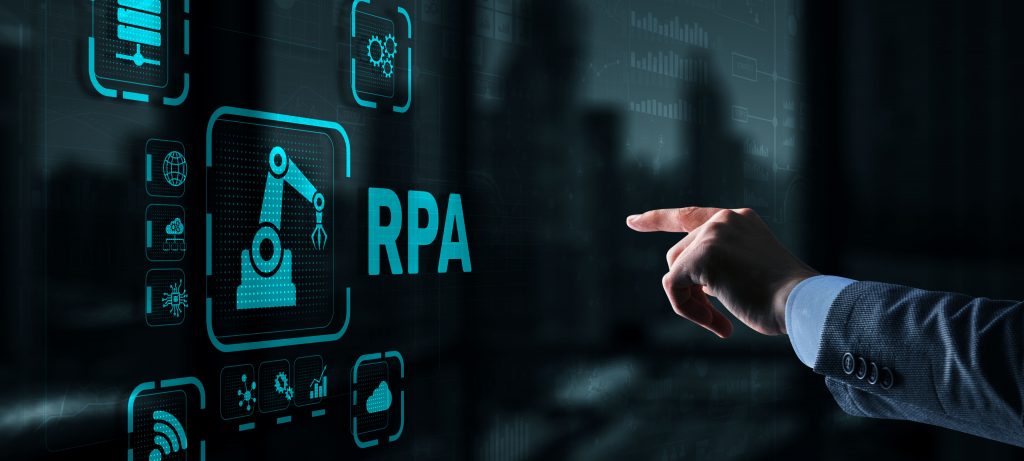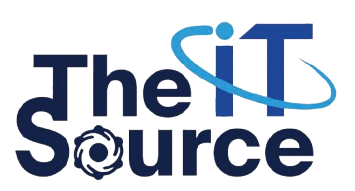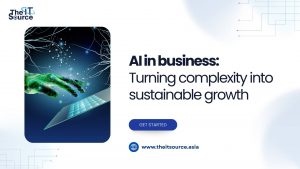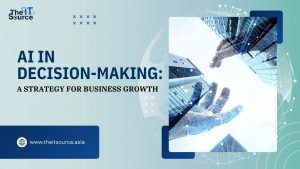AI and RPA: The Ultimate Guide to Intelligent Automation

For any organization on a digital transformation journey, Robotic Process Automation (RPA) has been a pivotal first step, delivering tangible returns by automating simple, rules-based tasks. Your business has likely already experienced the benefits: reduced manual entry, faster processing times, and fewer errors in structured workflows. However, as you’ve pushed the boundaries of automation, you have also likely encountered its ceiling. Many of your most critical business processes remain untouched, too complex, too variable, and too dependent on human cognition for traditional bots to handle.
This is where the strategic alliance of AI and RPA transforms the landscape. By augmenting the diligent, task-oriented nature of RPA with the cognitive power of Artificial Intelligence, organizations can move from simple task automation to genuine, end-to-end intelligent process automation. This article from The IT Source – a global partner for software development and AI services, serves as a comprehensive guide for leaders and managers who are ready to take the next step, exploring why this combination is so powerful, how RPA with AI works in practice, and the framework for implementing it successfully.
The Limits of Traditional RPA: Why “Dumb Bots” Hit a Ceiling
Traditional RPA is fundamentally about mimicry. A standard RPA bot is programmed to follow a strict script, executing a sequence of steps on a user interface exactly as a human would. This is incredibly effective for high-volume, predictable tasks like transferring data from a spreadsheet to a CRM or filling out a standardized web form.
However, this rigidity is also its greatest weakness. These “dumb bots” lack the ability to think, adapt, or interpret. They hit a hard ceiling when faced with any of the following challenges:
- Unstructured and Semi-Structured Data: The majority of business data invoices, emails, contracts, customer support tickets, and scanned documents, is unstructured. According to McKinsey’s Global Survey on AI 2023, handling this type of information remains one of the biggest challenges for enterprises, as traditional bots cannot easily interpret variable formats or contexts. It requires structured data, typically in a clean, table-based format.
- Process Variations and Exceptions: Business processes are rarely perfectly linear. When an unexpected error message pops up, a required document is missing, or a customer inquiry uses slightly different phrasing, the bot fails and creates an “exception” that must be handled manually by a human employee, often defeating the purpose of automation.
- The Need for Judgment: Many workflows involve simple decision-making that is beyond the scope of if-then rules. Tasks like categorizing an email’s sentiment as positive or negative, approving an expense report based on context, or identifying a potentially fraudulent transaction require cognitive capabilities.
It is at this ceiling that the conversation shifts from pure automation to intelligent automation, powered by the synergy of AI and RPA.
Introducing Intelligent Automation: The Powerful Synergy of AI and RPA

Intelligent Automation (IA), sometimes called Hyperautomation, is the concept of pairing RPA’s execution capabilities with AI’s cognitive skills. As Gartner’s definition of Hyperautomation explains, this approach enables enterprises to combine multiple advanced technologies to achieve end-to-end automation at scale. In this model, RPA acts as the “hands and legs” of the digital workforce, while AI provides the “eyes and brain,” enabling interpretation, analysis, and decision-making. This combination creates a far more versatile and powerful digital worker.
Infusing RPA with Cognitive Capabilities
When we talk about RPA AI, we are referring to the integration of specific AI technologies that give bots human-like abilities. The most impactful of these include:
- Optical Character Recognition (OCR) and Intelligent Document Processing (IDP): While basic OCR can extract text from an image, AI-powered OCR and IDP can understand the context. It can identify and extract specific fields from a wide variety of invoice formats, contracts, or forms, regardless of layout, and then pass that structured data to an RPA bot for processing.
- Natural Language Processing (NLP): This is the technology that allows machines to understand human language. By integrating NLP, a bot can read an inbound customer email, understand its intent, extract relevant entities (like customer number or order ID), and trigger the appropriate RPA workflow to resolve the issue.
- Machine Learning (ML): Machine Learning models can be trained on historical data to recognize patterns, predict outcomes, and make judgments. For instance, an ML model can analyze a loan application and assign it a risk score. The RPA bot can then use this score to either automatically approve the loan or route it to a human agent for a final review. This is a core component of how businesses are leveraging AI for smarter decision-making.
From Fragmented Tasks to End-to-End Automation
The true power of combining AI and RPA is the ability to automate entire, complex business processes from start to finish. Consider a typical accounts payable workflow:
- Without AI: An RPA bot might be able to download email attachments, but a human must open each PDF invoice, manually read it, key the data into the ERP system, and handle any invoices with unfamiliar formats.
- With AI and RPA: An NLP-powered bot monitors the inbox, identifies emails containing invoices, and triggers the workflow. An IDP solution then reads the PDF invoice (regardless of format), extracts the necessary data with high accuracy, and validates it against purchase orders. The RPA bot takes this structured data and seamlessly enters it into the ERP system, flagging only true exceptions for human review.
This is no longer just task automation; it is a fully autonomous, intelligent workflow.
How to Implement RPA with AI: A Practical Framework
Transitioning from traditional RPA to Intelligent Automation requires a strategic approach. It’s not just about buying new software; it’s about re-imagining your processes.
Step 1: Identify High-Value, Complex Processes
Your first step is to look beyond the simple, low-hanging fruit you’ve already automated. Analyze your existing workflows to find processes that are currently stalled due to their complexity. Prime candidates are those with high manual exception handling rates, those that rely heavily on reading documents or emails, or those that act as major bottlenecks in a larger value chain.
Step 2: Choose the Right Integrated Platform and Partner
To succeed with rpa with ai, you need a technology platform that was designed for this integration. Many modern automation platforms now include built-in AI capabilities, such as IDP and NLP modules. Even more critical is selecting an implementation partner who has deep expertise in both RPA and applied AI. They can help you navigate the complexities of integration, data training, and workflow redesign to ensure a successful outcome.
Step 3: Embrace the “Human-in-the-Loop” Model
Intelligent Automation doesn’t mean removing humans entirely. A best-practice approach is the “human-in-the-loop” model. In this setup, the AI handles the vast majority of cases with high confidence. When it encounters a low-confidence scenario or a true edge case, it automatically routes the task to a human expert for a decision. The AI then learns from this human interaction, becoming progressively smarter and more autonomous over time. This approach minimizes risk while maximizing efficiency.
Step 4: Launch a Pilot, Measure ROI, and Scale Intelligently
Instead of attempting a large-scale, “big bang” implementation, start with a single, high-impact pilot project. Define clear KPIs before you begin, such as “reduce invoice processing time by 75%” or “decrease manual exception handling by 90%.” The success of this pilot will provide a powerful business case and a proven blueprint to justify scaling intelligent automation across other departments. This aligns with the broader enterprise goal of achieving hyperautomation at scale, a top strategic trend identified by industry analysts.
The IT Source: Your Partner for the Next Generation of Automation
Understanding the gap between traditional RPA and the need for intelligent solutions, The IT Source has developed a suite of services designed to bridge it. Our AI Agent Builder Platform empowers you to build and deploy custom digital workers that seamlessly combine execution with cognition. Our unique AI Worker solution utilizes advanced Vision AI, allowing it to interact with applications just as a human does, making it more resilient and capable of working with legacy systems that lack APIs. We provide the strategic guidance and technical expertise to ensure your investment in AI and RPA delivers transformative results.
The future of business process automation is not just robotic; it’s intelligent. By strategically combining the execution power of RPA with the cognitive skills of AI, your organization can break through its current limitations, automate more complex processes, and unlock new levels of productivity and innovation.
Are you ready to evolve your digital workforce?
Contact the experts at The IT Source today for a complimentary consultation to assess your current automation landscape and build a roadmap for your journey into Intelligent Automation.


 日本語
日本語
